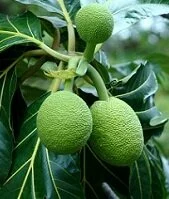Wildlife

"Flying foxes"
The number of native plants and animals in Samoa are somewhat limited since the country is an island nation. However, Samoa boasts a more diverse plant system than any other nation in Polynesia with the exception of Hawai'i (in the United States); in some ways Samoa boasts more plant diversity than even New Zealand. However, the native land animal life is almost non-existent. It is the migrating birds and sea life that has had the most significant presence in creating today's plant and animal life. Much of what is found on the islands today was introduced in pre-historic times by the migrating people, birds, winds, and ocean currents.
As an island nation that rose from the sea floor there were no native mammals in Samoa, although a few bat species arrived thousands of years ago. The most famous of these is the "flying fox," a large bat found throughout the country. Some species of rats also made their way to the islands hundreds, if not thousands of years ago. Other than this, no land mammals existed on Samoa until the arrival of the earliest people, who likely came from the region of New Guinea and may have brought with them dogs and pigs, two animals that eventually made their way to Samoa.
The seas are also home to mammals as dolphins and whales call the surrounding waters home. These waters are also filled with thousands of fish, shellfish, and other forms of sea life. This sea life includes surgeonfish, clownfish, sailfish, puffer fish, butterfly fish, grouper, barracuda, tuna, mackerel, marlin, mahi-mahi, shrimp, krill, crab, seahorses, manta rays, sharks, jellyfish, starfish, sea urchins, coral, as well as the famous and culturally-important Palolo Reef Worm among many others.

Breadfruit tree
This sea life and the islands have also attracted numerous birds, including many that feed off the animals in the sea. The bird life in Samoa includes doves, parrots, ducks, heron, terns, frigate birds, pigeons, cuckoos, and the locally famous manumea among others.
The reptilian and amphibious life is fairly limited for the same reasons the mammalian life is limited. The most common of these animals are those adapted to the water and swimming as sea turtles can be found in the nearby waters. Land species have again made their way to the islands in numerous methods and today lizards, snakes, and geckos are among the most common of these animals.
The insect and other small animal life is fairly diverse as many insects can fly or float and have made their way to Samoa. These animals include butterflies, moths, beetles, bees, ants, flies, snails, spiders, mosquitos, and worms among others.
The plant life, as mentioned, is relatively diverse for a small country, especially an isolated island nation. The diversity is best noted in the form of trees and ferns as many species of each are widespread and the variety is quite diverse. However it is only really in the tree and fern species that the plant life in Samoa is diverse. Despite this locally diverse plant life, most seeds arrived to the islands through wind, water, and birds so today most of the plants on Samoa are no different than neighboring islands. These foreign plants, that now thrive in the country, include coconuts, taro, breadfruit, bananas, yams, arrowroot, lemons, and sugarcane among others.
There is also a presence of other trees and plants, including orchids, hibiscus, eucalyptus, frangipani, ferns, mosses, mahogany trees, mangrove trees, and pandanus trees.